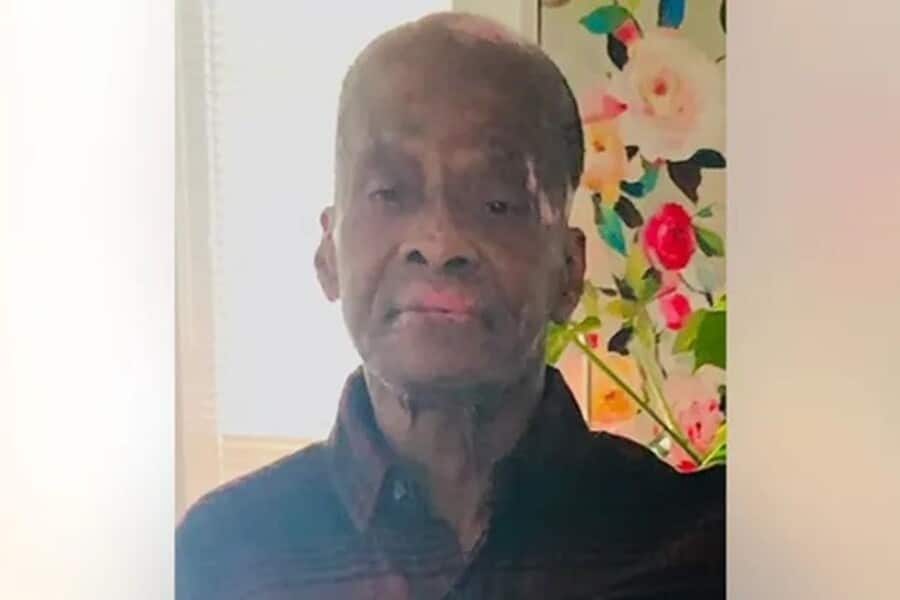
In the shadowed silence of an October night, an unimaginable horror unfolded in a serene Washington D.C. neighborhood, thrusting it into the harsh glare of national attention. Reggie Brown, a 64-year-old man celebrated for his gentle nature and resilience in the face of significant physical disabilities, met a violent end in the city’s northwest quarter. The architects of this harrowing incident were inconceivably young, mere children, three girls aged between 12 and 13 years, defying any expected norms of juvenile behavior.
Responding to a distressing call, officers of the Metropolitan Police Department arrived at the 6200 block of Georgia Avenue in the early hours, finding Brown critically injured from what was an assault born of unfathomable malice. The scene they encountered spoke volumes of the brutality inflicted upon Brown, who, despite emergency services’ swift arrival, was declared deceased, his life extinguished by the severe blunt force trauma inflicted upon him.
This chilling episode not only robbed a community of a beloved figure but also posed poignant questions about the societal undercurrents capable of leading the young into such depths of violence. It left a city in mourning, grappling with the dual loss of life and innocence, as the dawn broke on a reality where the vulnerability of one’s spirit and body could be so brutally exploited.
A Quiet Man In A Loud World
Reggie Brown’s existence was a testament to the extraordinary courage found in the quotidian, his life a quiet rebuttal to the clamor and chaos often prevailing in the world around him.
To those within his community, he was a figure of unassuming grace and politeness, a man who, despite facing the daunting challenges of physical and mental health issues, carried himself with an air of serene dignity.
A close family friend’s words to FOX 5 DC painted a vivid picture of Brown as “just a quiet, nice, polite person” who navigated life’s vicissitudes with remarkable calm, never imposing his struggles upon others.
Brown’s physical limitations, including the noticeable absence of most of his fingers and a metal plate embedded in his skull, were but mere facets of his existence, not the defining elements of his identity.
These adversities, rather than diminishing his spirit, seemed to enrich a reservoir of inner strength and resilience. His demeanor was a reflection of a profound acceptance and a testament to his ability to adapt and persevere.
In a world that often overlooks the quiet strength of those like Brown, his life was a beacon of dignity, demonstrating how to face adversity without losing one’s essence. Through his daily actions and interactions, he exemplified how resilience could be both a quiet statement and a loud proclamation of one’s steadfastness in the face of life’s trials.
The Arrests That Shocked The City
The subsequent investigation into Brown’s death led to a disturbing revelation. Three young girls, two aged 13 and one aged 12, were arrested and charged with second-degree murder. The community and law enforcement were left reeling at the thought of children so young being accused of such a heinous act.
Video evidence presented in court depicted a scene so brutal that seasoned detectives and court attendees were left in shock. The footage showed the group assaulting Brown, an act of violence that ended with the most tragic of outcomes.
These arrests have reignited conversations around juvenile delinquency, mental health, and the systems in place to prevent such tragedies. The girls, whose identities are protected due to their minor status, reportedly have histories of truancy, with one not attending a single day of class in 2024. This detail adds a layer of complexity to an already convoluted narrative, raising questions about the intersection of education, community support, and juvenile justice.
A Community In Mourning, A System Under Scrutiny
As the legal proceedings against the young suspects unfold, the community mourns not just the loss of Reggie Brown but also the loss of innocence implied by the crime. Brown’s niece, in a statement to NBC Washington, expressed a sentiment felt by many:
“My uncle didn’t deserve this… He was known in this community for years, so for this to happen where he lived for 64 years is insane. They have to be held accountable.”
This tragedy has prompted discussions on the adequacy of support systems for the youth and the disabled in urban settings. D.C. Mayor Muriel Bowser’s potential proposal to hold parents accountable for their children’s truancy is a testament to the urgency for systemic solutions. Moreover, the staggering statistic from the Office of the State Superintendent of Education, revealing that 60% of D.C. high school students were chronically absent in the 2022-2023 school year, underscores a broader issue of disengagement and disenfranchisement among the city’s youth.
Looking For Light In The Darkness
In the wake of this tragedy, the Metropolitan Police Department has been proactive in seeking justice for Brown while also calling for community assistance. A reward of up to $25,000 is offered for information leading to further insights into the case, underscoring the department’s commitment to not only solving this case but also to deterring future acts of juvenile violence.
The community’s response has been one of grief, but also of action. Vigils for Brown and discussions on community safety reflect a collective desire to address the root causes of such violence. These events serve as a poignant reminder of the work that remains to be done to ensure the safety and well-being of all citizens, particularly the most vulnerable.
As this case progresses, it serves as a critical moment for reflection on the part of policymakers, community leaders, and citizens alike. The murder of Reggie Brown is a stark reminder of the complexities surrounding crime, punishment, and rehabilitation, especially concerning young offenders. It raises difficult questions about how society can better support at-risk youth, ensure accountability, and prevent future tragedies.
The coming months will undoubtedly be challenging for the community as it seeks to heal and make sense of this senseless act. Yet, there is hope that from this tragedy, there can come a renewed commitment to fostering a society where such violence is not only condemned but prevented through proactive engagement and support for all its members.
In memory of Reggie Brown, let his life be a call to action—a reminder that in the quest for justice, society must not overlook compassion, understanding, and the deep, systemic changes needed to protect the most vulnerable. As this case unfolds, it will, hopefully, pave the way for meaningful dialogue and action that can prevent such tragedies in the future.





